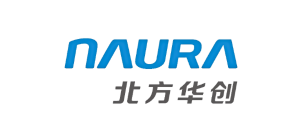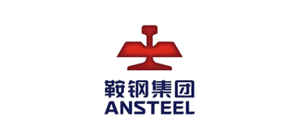Industry Encyclopedia>How to improve language understanding accuracy of big model
How to improve language understanding accuracy of big model
2024-04-23 10:22:03
To improve the language understanding accuracy of large models through optimization, we can start from many aspects.
The following are some suggestions: First, data optimization data cleaning and preprocessing: to ensure the accuracy and cleanliness of training data, remove noise and invalid data, and conduct standardized data processing to improve the efficiency and accuracy of model training.
Data enhancement: Increasing the diversity of training data through data enhancement techniques such as backtranslation (translating text into another language and back into the original language) or synonym substitution helps the model generalize better to previously unseen data.
Domain-specific data: Collect more relevant data for a specific domain to enhance the model's understanding in that domain.
Optimize the depth and width of the model: Adjust the depth (number of layers) and width (number of neurons per layer) of the model to find the best network structure and improve the expressiveness of the model.
Attention mechanism: Introduce or optimize self-attention mechanism, so that the model can better capture the context information in the text, thus improving the accuracy of language understanding.
Regularization technology: Apply technologies such as Dropout and L1/L2 regularization to prevent model overfitting and improve its generalization ability on unseen data.
Training strategy optimization Learning rate adjustment: Adopt dynamic learning rate adjustment strategies, such as learning rate attenuation or cyclic learning rate, to help the model converge better during training.
Optimizer selection: Select the appropriate optimizer, such as Adam, RMSprop, etc, to improve training efficiency and model performance.
Early Stopping: Stopping training when validation errors start to rise to prevent overfitting.
Post-processing and calibration confidence calibration: The output confidence of the model is calibrated to more accurately reflect the certainty of the model for the predicted results.
Error analysis: Conduct a detailed analysis of the model's errors on the verification set, find out the situations and reasons for the model's error prone, and make targeted optimization.
Ensemble learning: By integrating the prediction results of multiple models, such as Bagging or Boosting, to improve the overall prediction accuracy.
Transfer learning: finetuning a large pre-trained model to fit the distribution of data for a particular task, thereby improving the accuracy of the model's language understanding on that task.
In summary, comprehensive optimization measures such as data optimization, model architecture and algorithm optimization, training strategy optimization, post-processing and calibration, and integrated learning and transfer learning can effectively improve the language understanding accuracy of large models.
The following are some suggestions: First, data optimization data cleaning and preprocessing: to ensure the accuracy and cleanliness of training data, remove noise and invalid data, and conduct standardized data processing to improve the efficiency and accuracy of model training.
Data enhancement: Increasing the diversity of training data through data enhancement techniques such as backtranslation (translating text into another language and back into the original language) or synonym substitution helps the model generalize better to previously unseen data.
Domain-specific data: Collect more relevant data for a specific domain to enhance the model's understanding in that domain.
Optimize the depth and width of the model: Adjust the depth (number of layers) and width (number of neurons per layer) of the model to find the best network structure and improve the expressiveness of the model.
Attention mechanism: Introduce or optimize self-attention mechanism, so that the model can better capture the context information in the text, thus improving the accuracy of language understanding.
Regularization technology: Apply technologies such as Dropout and L1/L2 regularization to prevent model overfitting and improve its generalization ability on unseen data.
Training strategy optimization Learning rate adjustment: Adopt dynamic learning rate adjustment strategies, such as learning rate attenuation or cyclic learning rate, to help the model converge better during training.
Optimizer selection: Select the appropriate optimizer, such as Adam, RMSprop, etc, to improve training efficiency and model performance.
Early Stopping: Stopping training when validation errors start to rise to prevent overfitting.
Post-processing and calibration confidence calibration: The output confidence of the model is calibrated to more accurately reflect the certainty of the model for the predicted results.
Error analysis: Conduct a detailed analysis of the model's errors on the verification set, find out the situations and reasons for the model's error prone, and make targeted optimization.
Ensemble learning: By integrating the prediction results of multiple models, such as Bagging or Boosting, to improve the overall prediction accuracy.
Transfer learning: finetuning a large pre-trained model to fit the distribution of data for a particular task, thereby improving the accuracy of the model's language understanding on that task.
In summary, comprehensive optimization measures such as data optimization, model architecture and algorithm optimization, training strategy optimization, post-processing and calibration, and integrated learning and transfer learning can effectively improve the language understanding accuracy of large models.
























